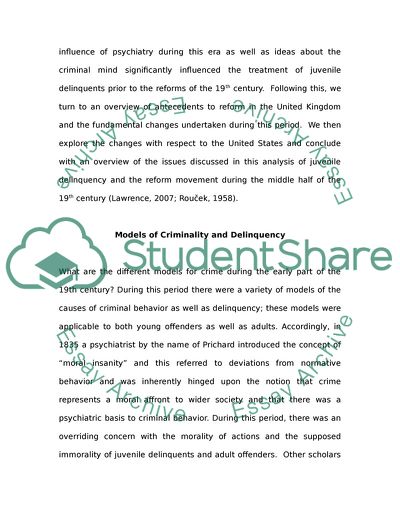Cite this document
(The Problem of Juvenile Delinquency and Changes in Middle Class Coursework, n.d.)
The Problem of Juvenile Delinquency and Changes in Middle Class Coursework. Retrieved from https://studentshare.org/law/1729125-to-what-extent-was-the-problem-of-juvenile-delinquency-less-of-a-real-crime-problem-and-more-a-reflection-of-changes-in-middle-class-attitudes-and-practices-in-the-nineteenth-century
The Problem of Juvenile Delinquency and Changes in Middle Class Coursework. Retrieved from https://studentshare.org/law/1729125-to-what-extent-was-the-problem-of-juvenile-delinquency-less-of-a-real-crime-problem-and-more-a-reflection-of-changes-in-middle-class-attitudes-and-practices-in-the-nineteenth-century
(The Problem of Juvenile Delinquency and Changes in Middle Class Coursework)
The Problem of Juvenile Delinquency and Changes in Middle Class Coursework. https://studentshare.org/law/1729125-to-what-extent-was-the-problem-of-juvenile-delinquency-less-of-a-real-crime-problem-and-more-a-reflection-of-changes-in-middle-class-attitudes-and-practices-in-the-nineteenth-century.
The Problem of Juvenile Delinquency and Changes in Middle Class Coursework. https://studentshare.org/law/1729125-to-what-extent-was-the-problem-of-juvenile-delinquency-less-of-a-real-crime-problem-and-more-a-reflection-of-changes-in-middle-class-attitudes-and-practices-in-the-nineteenth-century.
“The Problem of Juvenile Delinquency and Changes in Middle Class Coursework”. https://studentshare.org/law/1729125-to-what-extent-was-the-problem-of-juvenile-delinquency-less-of-a-real-crime-problem-and-more-a-reflection-of-changes-in-middle-class-attitudes-and-practices-in-the-nineteenth-century.


